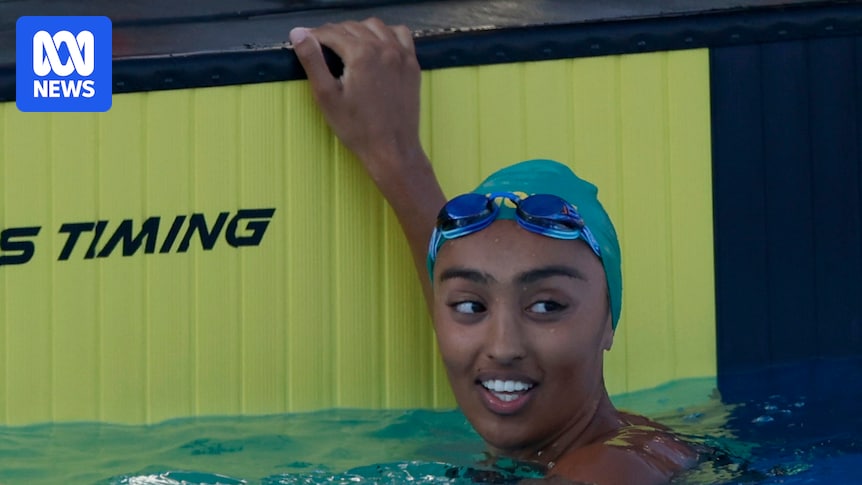
Nineteen-year-old Teagan Zurawel vividly recalls the challenges she faced managing her period while participating in Little Athletics. During competitions at her local Geelong center, she often found herself in a long line of girls waiting for the single toilet equipped with a sanitary bin. “You’d have to wait a while to get into that toilet,” she says. “I started to worry I wouldn’t be able to change in time for my next event, because you’d have to keep an ear out for if your age group gets called while you’re in the bathroom.”
Zurawel’s experience is not unique. A recent survey conducted by Federation University revealed that one in five girls aged 10 to 16 have considered dropping out of sports due to period-related challenges. The survey, which included 464 Australian girls involved in swimming and athletics, found that over 61% shared concerns about not having enough time to change their period protection. Additionally, 63% reported missing training sessions, and one in three skipped competition events altogether.
Impact of Period-Related Challenges on Sports Participation
The survey highlights a significant issue affecting young female athletes: the lack of access to sufficient or hygienic facilities, such as bathrooms and changing rooms, and inadequate period protection like free tampons and pads. Jane Strachan, the lead author of the study, expressed concern over these findings, noting that they may contribute to the sharp decline in girls’ participation in sports around age 14. “Absolutely, I think there’s a link,” Strachan said. “One in five is a big enough number to warrant us looking seriously at this.”
Data shows that while 83% of Australian girls participate in sports at age nine, this figure drops to as low as 23% by age 15.
Strachan emphasizes the importance of keeping adolescents engaged in sports, as it greatly increases the likelihood of them remaining physically active into adulthood, thus reaping long-term health benefits.
Personal Stories Highlight the Need for Change
Semra Olowoniyi, a 20-year-old swimmer, shared her own struggles with heavy periods and painful cramps, which often kept her away from school and swimming sessions. “Obviously, as a 14-year-old it was so embarrassing being around other people when that happened,” she recalls. Swimmers, like Olowoniyi, face additional challenges due to the difficulty of changing tampons during long training sessions, compounded by the time-consuming process of getting in and out of race suits.
Clare Burton, General Manager at Swimming Victoria, argues that stories like Olowoniyi’s underscore the need for sports organizations to take these challenges seriously. “If 63% of our girls aren’t turning up to training, they’re missing out on everything good that comes along with community sport,” she said, highlighting the impact on both personal development and high-performance pathways.
Addressing the Issue: Solutions and Cultural Shifts
Some sports organizations are already taking steps to address these challenges. Swimming Victoria, for instance, has made tampons and pads freely available in changing rooms at the Melbourne Sports and Aquatic Centre (MSAC) and introduced an inclusive swimwear policy that allows girls to wear two-piece suits during competitions. This policy enables those menstruating to wear period underwear beneath their race suits.
Additionally, Swimming Australia is revising its coaching framework to educate entry-level coaches on how to discuss menstrual cycles with young athletes. Burton also mentioned the possibility of better scheduling competition events to provide more time for changing.
Meanwhile, Little Athletics CEO Anthony McIntosh noted that athletics could advocate for better changing conditions and equipment at individual clubs, while the sport has moved away from requiring white shorts, addressing fears of leaking.
However, Burton believes the most significant change needed is cultural. “I wish it was easier for young girls to talk about their periods,” she said. “Being able to have the confidence to say, I’ve got my period today, and it not be a disaster.”
Breaking the Period Taboo
Strachan agrees that breaking the taboo around periods is crucial. She points out that menstrual education in schools often segregates boys and girls, reinforcing the notion that periods are solely a ‘woman’s issue.’ Without adequate education, coaches may misinterpret girls missing training as laziness or poor motivation, potentially affecting team selection and other opportunities.
“Everyone needs different levels of education, and it’s working out how we can support everyone to come on this journey,” Strachan says.
Both Olowoniyi and Zurawel agree that better education for coaches and male athletes about periods is necessary. Olowoniyi recalls feeling anxious about boys being around when she experienced bleeding in the pool. “You don’t really want to talk about it and you don’t want them to see the pool of blood,” she explains.
Zurawel, on the other hand, feels fortunate to have a supportive female coach who provides sanitary products and snacks. Her advice to others is straightforward: “Don’t try and make it awkward by making small talk, just get straight to the point, and have a spare pack of sanitary products in your bag just in case.”
As the conversation around periods and sports continues to evolve, it is clear that addressing these challenges requires both practical solutions and a broader cultural shift. By fostering an environment where young girls feel comfortable discussing their periods, sports organizations can help ensure that all athletes have the opportunity to thrive.





